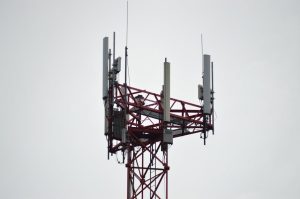GEO Satellites: The Backbone of Global Telecommunications – GEO Satellites

GEO Satellites: The Backbone of Global Telecommunications – GEO Satellites
GEO satellites, or Geostationary Earth Orbit satellites, are a type of satellite that orbits the Earth at an altitude of approximately 36,000 kilometers, remaining stationary relative to a fixed point on the equator. This unique characteristic allows GEO satellites to provide continuous coverage of a specific region, making them an essential component of modern telecommunications.
The first GEO satellite, Syncom 2, was launched in 1963, and since then, hundreds of GEO satellites have been launched to provide a wide range of services, including television broadcasting, telecommunications, weather forecasting, and navigation. GEO satellites have revolutionized the way we communicate, enabling global connectivity and facilitating international trade, commerce, and cultural exchange.
Applications of GEO Satellites
GEO satellites have numerous applications in various fields, including telecommunications, broadcasting, weather forecasting, and navigation. In telecommunications, GEO satellites provide broadband internet access, mobile connectivity, and voice services to remote and underserved areas, connecting people and communities worldwide. They also enable international telecommunications, facilitating global communication and collaboration.
In broadcasting, GEO satellites distribute television channels, radio programs, and other multimedia content to a wide audience, providing entertainment, news, and educational programs to people around the world. Weather forecasting is another critical application of GEO satellites, as they monitor weather patterns, track storms, and provide early warnings for natural disasters, helping to protect life and property.
How GEO Satellites Work
GEO satellites work by transmitting and receiving signals to and from Earth stations, which are specialized antennas that communicate with the satellite. The signals are transmitted to the satellite on a specific frequency, and the satellite amplifies and retransmits the signal back to Earth, allowing it to be received by other Earth stations. This process enables communication between two distant points on the globe, facilitating global connectivity.
The satellite’s altitude and orbital velocity allow it to maintain a stationary position relative to a fixed point on the equator, ensuring continuous coverage of a specific region. The satellite’s transponders, which are specialized amplifiers, receive and retransmit the signals, allowing multiple signals to be transmitted simultaneously.
Advantages and Challenges of GEO Satellites
GEO satellites offer several advantages, including global coverage, high-speed connectivity, and reliability. They provide connectivity to remote and underserved areas, enabling access to essential services like healthcare, education, and finance. GEO satellites also facilitate international telecommunications, supporting global trade, commerce, and cultural exchange.
However, GEO satellites also face challenges, such as signal delay, interference, and congestion. The signal delay, also known as latency, occurs due to the time it takes for the signal to travel from the Earth station to the satellite and back. Interference from other satellites or terrestrial sources can also affect signal quality, and congestion can occur when multiple signals are transmitted simultaneously, reducing the overall quality of service.




